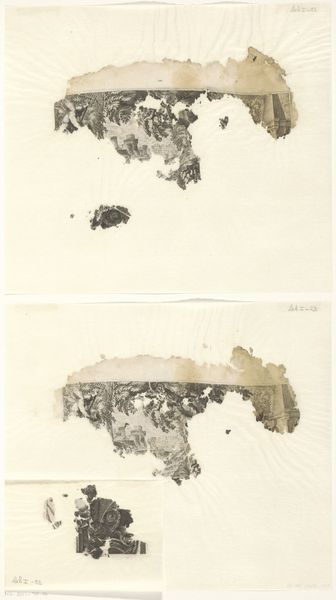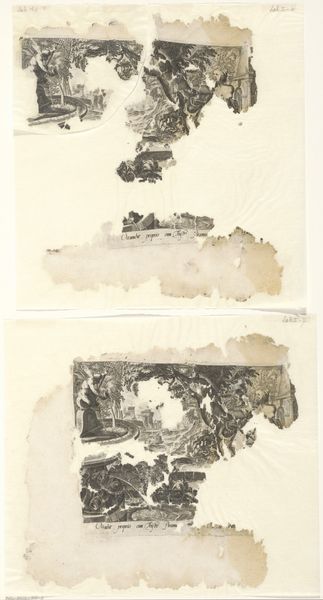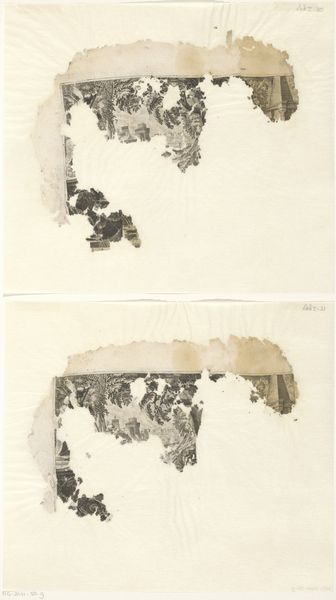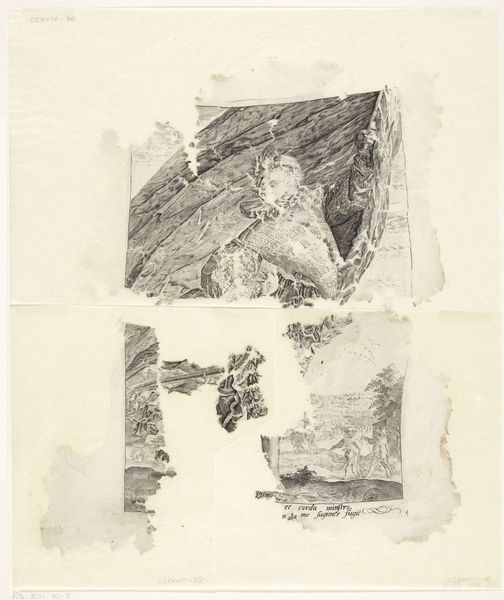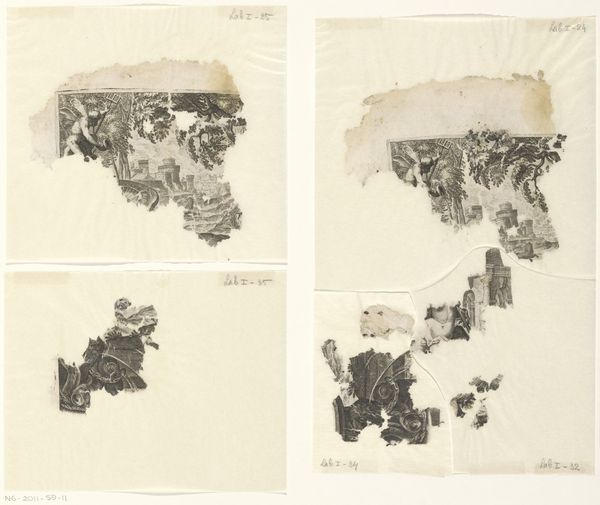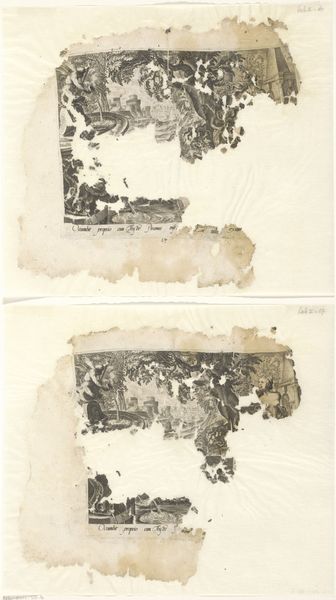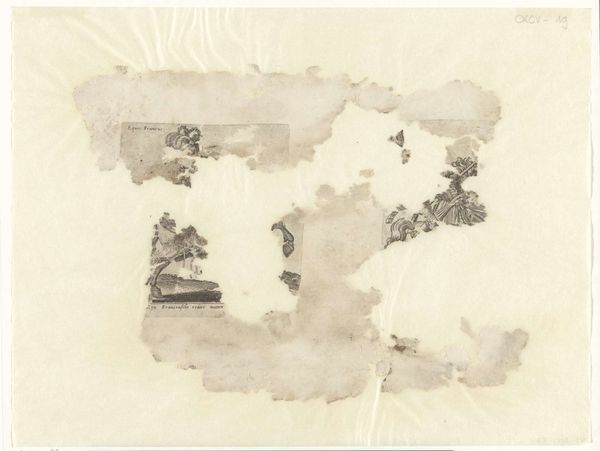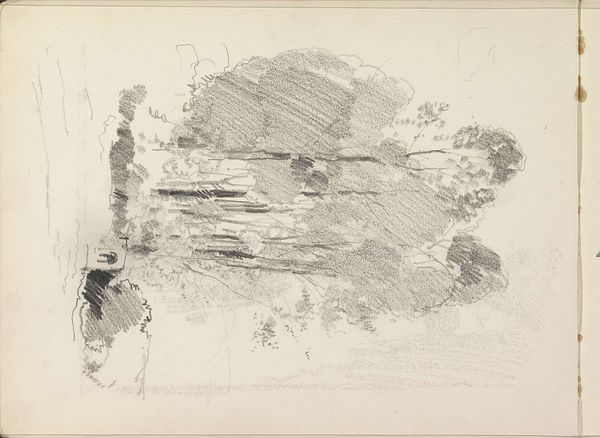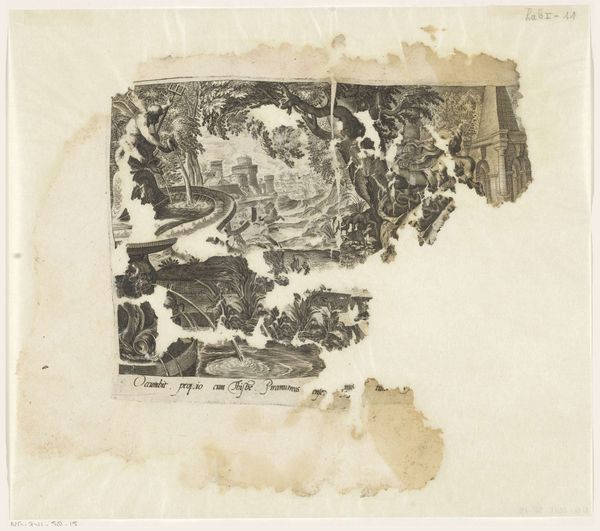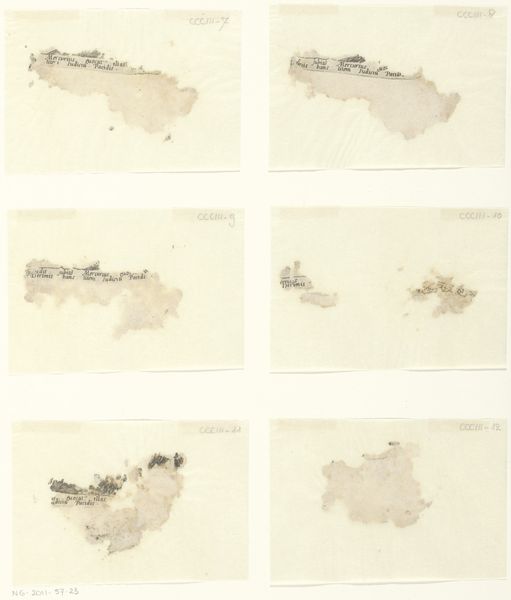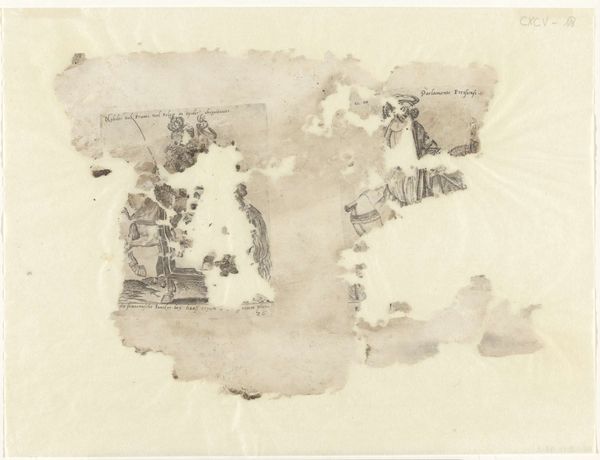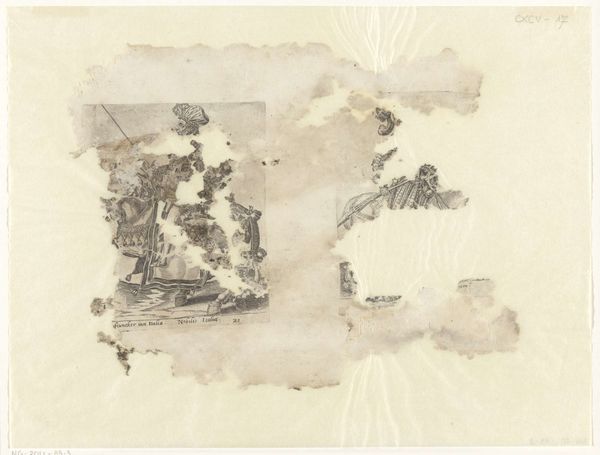
drawing, mixed-media, print, ink, engraving
#
drawing
#
mixed-media
#
ink painting
# print
#
11_renaissance
#
ink
#
history-painting
#
italian-renaissance
#
mixed medium
#
engraving
Dimensions: height 258 mm, width 262 mm, height 277 mm, width 322 mm
Copyright: Rijks Museum: Open Domain
Curator: Looking at "Pyramus en Thisbe," made sometime between 1580 and 1596 by an anonymous artist, what leaps out at you? Editor: Tragedy! It’s soaked in melancholy, fragmented as if the very story it tells has been torn apart and then haphazardly reassembled. Curator: It is quite striking, isn't it? Created using mixed media, incorporating drawing, ink, engraving, and printmaking techniques, it captures a poignant moment from Ovid's Metamorphoses, a narrative about forbidden love and tragic miscommunication. It is currently held at the Rijksmuseum. Editor: The dark ink bleeds across the paper like a spreading stain of sorrow. I am drawn to the symbol of the mulberry tree, meant to be a symbol of lovers, turned morbid here. Did you know mulberries have been seen throughout history, particularly in art, as symbolizing not only fertility but also, contradictorily, caution? Curator: It's as though the artist, in employing these various mediums, is layering not only visual textures, but also emotional ones. The historical weight of the Italian Renaissance is certainly present. History paintings like this really get to the heart of the artist's relationship with storytelling. Editor: And there's that tension! Thisbe pulling the bloody dagger away from her heart, near the image of her and Pyramus finally reunited in death; so tragic and symbolic. The broken architecture seems to indicate the collapse of their family lines through the taking of their lives. The whole picture resonates as both lament and a stern caution. Curator: Agreed. The power of the piece, despite its fragmentation, lies in how vividly it continues to evoke the timeless themes of love, loss, and the dire consequences of misunderstanding. It reminds me that certain stories will always speak to us, regardless of the form they take. Editor: Yes, and to recognize that sometimes the stories with the saddest endings yield the most critical and impactful social messaging throughout the years. A true triumph in tragic artistry.
Comments
No comments
Be the first to comment and join the conversation on the ultimate creative platform.
